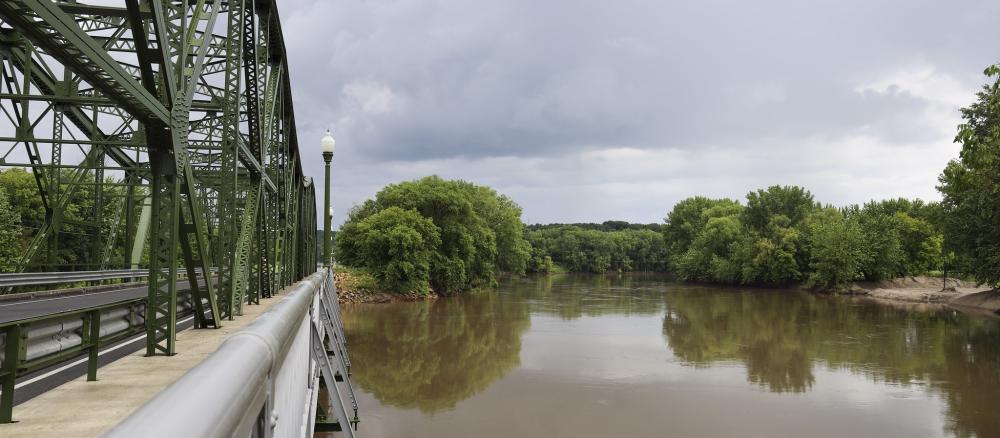The Minnesota River-Mankato watershed covers 861,886 acres across Cottonwood, Brown, Redwood, Renville, Sibley, Nicollet, Blue Earth, and Le Sueur counties in south-central Minnesota. Cities include Fairfax, New Ulm, Lake Crystal, St. Peter, North Mankato, and Mankato. It is located primarily in the Western Cornbelt Plains ecoregion of south-central Minnesota, with the far eastern reaches stretching into the North Central Hardwood Forest ecoregion. There are about 1,564 stream miles in the Minnesota River - Mankato watershed, and few large lakes, with only six exceeding 500 acres.
The watershed is diverse in landscape, with flat cropland in the west and bluffs and lakes in the east. While the vast majority is cropland, the city of Mankato is a regional urban center with several small cities along the main stem of the Minnesota River. Like its landscape, the goals and values of water quality vary across the watershed, making consensus a challenge.
The Minnesota River-Mankato watershed is composed of several small first and second order streams that drain directly into the Minnesota River. Land use in the Minnesota River-Mankato watershed is dominated by row crop agriculture, with corn and soybean production accounting for about 90% of cropped lands.
County Soil and Water Conservation Districts have identified the primary resource concerns to be sediment and erosion control, stormwater management, drinking water and source water protection, drainage management, waste management, nutrient management, surface water quality and wetland management.
Monitoring and assessment
Intensive water monitoring is completed, with the MPCA and local partners collecting data from more than 110 sites over two years.
Strategy development for restoration and protection
- Minnesota River bacteria TMDL and strategies report
-
(MPCA approval 1/23/2020)
-
(EPA approval 2/20/2020)
Crystal Lake excess nutrients TMDL
-
(EPA approval 5/16/2019)
Water quality model supporting documents
The MPCA worked with Fortin Consulting to develop a directory of stakeholders in the watershed. This directory offers a searchable list of groups with an interest in the Minnesota River.
